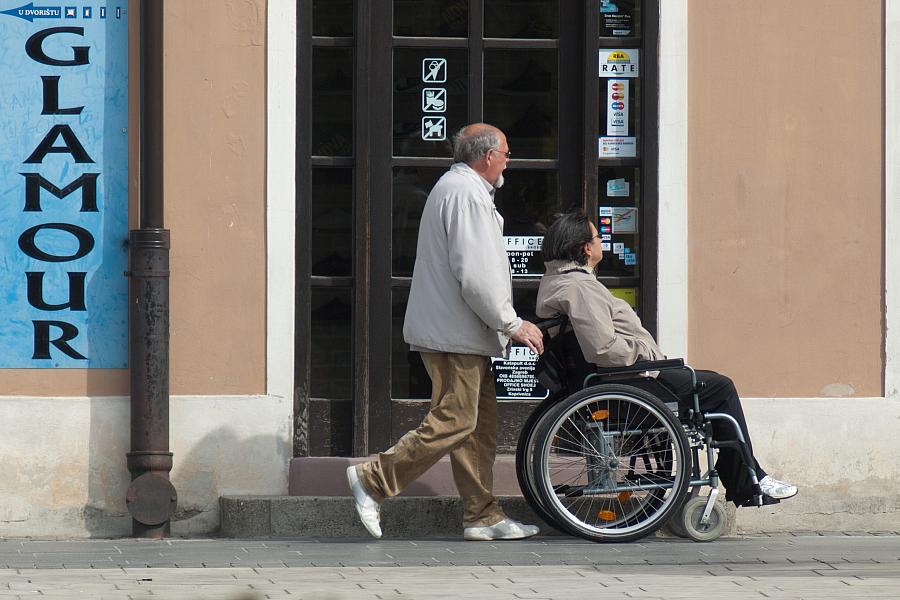Did California devalue disabled lives throughout the pandemic?

(Creative Commons photo)
In late January, the state of California changed its vaccine eligibility guidelines to exclude people with disabilities and high risk conditions, adopting instead a model that prioritized age only.
Across the state, people with disabilities had their hopes of speedy immunizations dashed.
Speaking with KQED at the time, disability activist Alice Wong said, “I'm so angry, so sad and so scared… I think a lot about very young, disabled, critically ill and immunocompromised people who could die before it's their turn to be vaccinated.”
Though the state eventually changed course, it was emblematic of a pandemic response that advocates say has cast a blind eye towards people with disabilities — a response that comes down to devaluing certain lives while protecting others.
The reality is that people with disabilities and chronic conditions have been disproportionately impacted by this pandemic on almost every level.
First, they are more likely to be infected by the virus. Congregate living situations such as board and care homes can act as hotspots for virus spread due to an inability to socially distance and the continual rotation of staff and residents (much like prisons and nursing homes). People who live in their own homes often require caretakers and assistance, and risk exposure with each visit. And for people who are immunocompromised, the risk of transmission is even higher.
Even without exposure to COVID-19, they still face significant health risks. Many people with disabilities have postponed critical medical treatments and procedures, simply out of fear of exposure to a virus that could be a death sentence.
If someone with a disability does become infected, the risk of hospitalization or death is far higher than the broader population. A recent report from the UK showed that six out of every 10 patients who died from COVID-19 had a disability. People affected by Down syndrome (trisomy 21) are five times more likely to be hospitalized from COVID-19 and 10 times more likely to die from it than the general population.
Adding to these fears are the well-documented biases within the medical system, which affect the type and quality of care people with disabilities receive if they do get sick. Over the past year of the pandemic, as the medical system has faced a scarcity of supplies, staff, and hospital beds, multiple reports detailed plans for medical rationing and triage, essentially prioritizing younger, healthier people over those with disabilities.
In one example, multiple states issued guidelines to medical professionals that seemingly suggested that medical staff remove “ventilators from people using them for a chronic condition who are judged lower priority, in order to give them to other individuals.” Reports of medical rationing have left many people with disabilities afraid to seek medical treatment even for non-COVID-19 related issues.
As the country begins to further expand access to vaccines, and as the prospect of opening up fully seems to be on the horizon, I will take a look at three main topics in a series of audio stories for the 2021 California Fellowship. First, I’ll look back at the past year of the pandemic and the effect it’s had on the disabled community. Specifically, I’ll look into the state’s pandemic response and the blind spots that it has had when it comes to considering the needs of this community.
Second, I’ll look at the challenges people with disabilities are still dealing with when it comes to vaccine access and barriers to equal treatment from the medical establishment. Some examples include deaf, nonverbal, neurodiverse, and people with sensory issues, who can all have difficulty accessing vaccine sites, communicating needs, and generally navigating the system.
Finally, I’ll look at the influx of people who are newly diagnosed with chronic conditions due to COVID-19, and what it means for the future of the disabled community and the resources available to support disabled individuals.
Those with long-term effects from COVID-19 have been called “long-haulers.” They often end suffering from ongoing headaches, mental fog, respiratory damage, blood clotting issues, organ damage, and other issues. As research continues over the next several months, I’ll report on new findings. I also want to include the personal accounts of people dealing with this issue as they try to figure out what their own future looks like.
People with disabilities are used to having external narratives placed on them. As I report this story, it’s absolutely critical that it be driven by the voices of people living with disabilities and chronic conditions.
I plan to create an advisory group — drawn from community organizations — for the entire lifecycle of the project as a way to include the voices and perspectives of this community. I hope that the end result will be reporting that is better informed, more relevant, and more reflective of the lived experience of its subjects.

